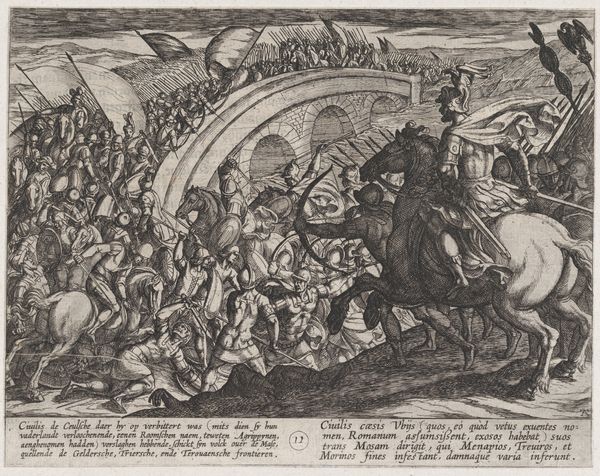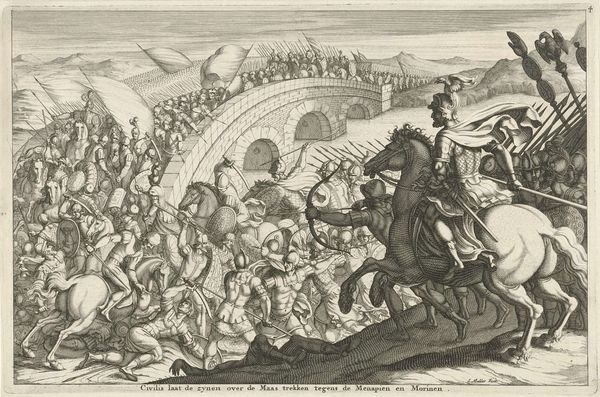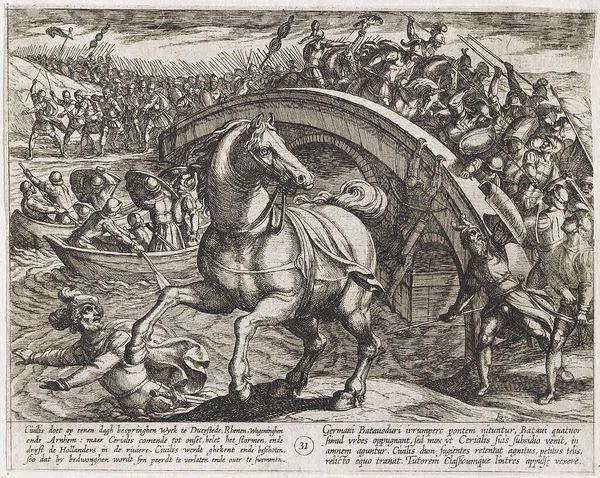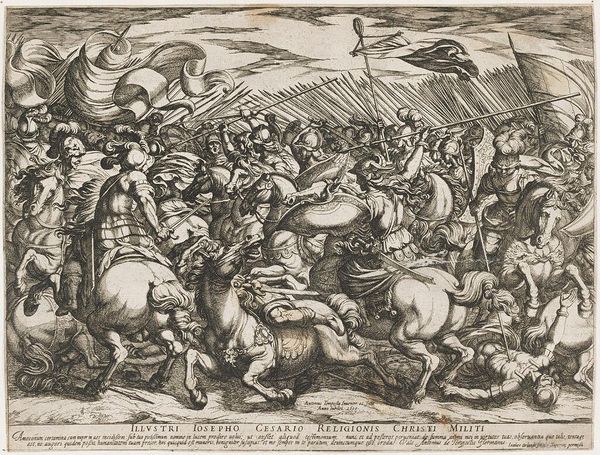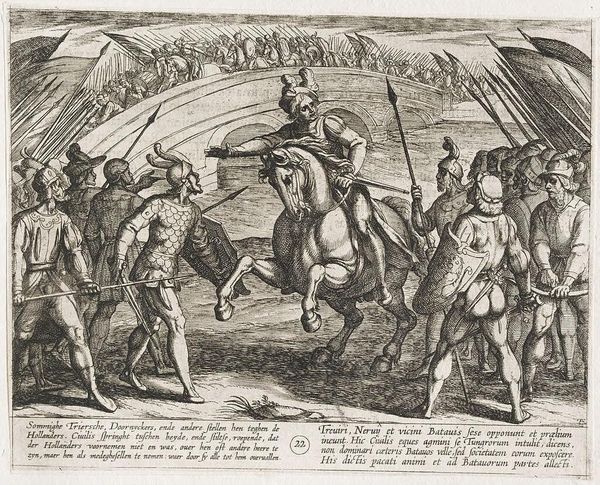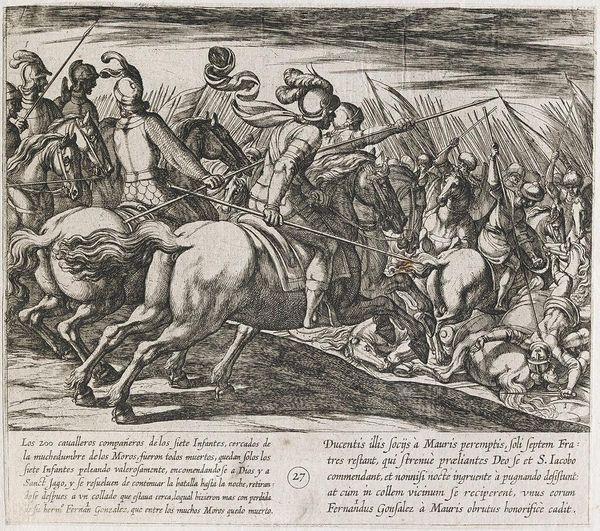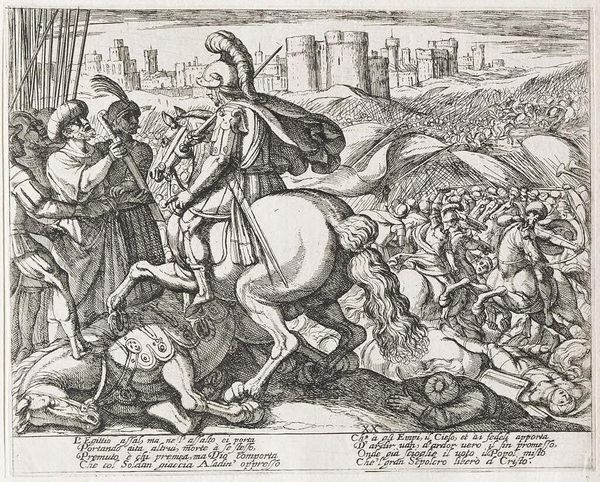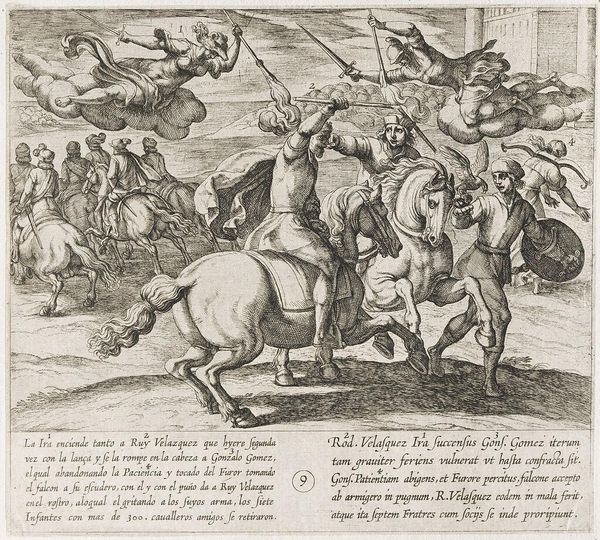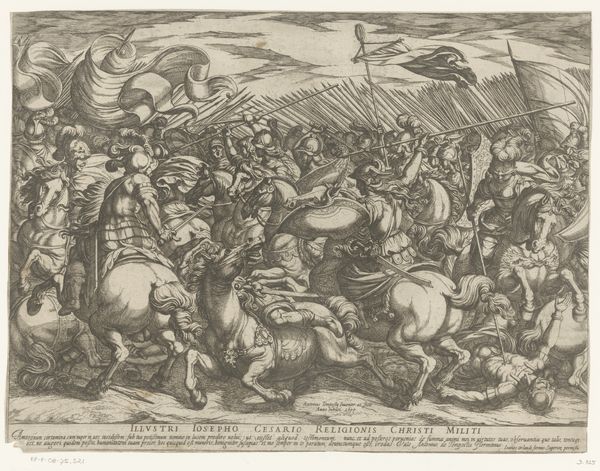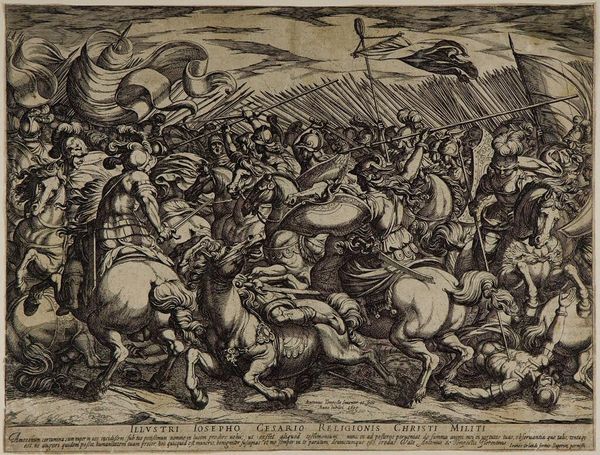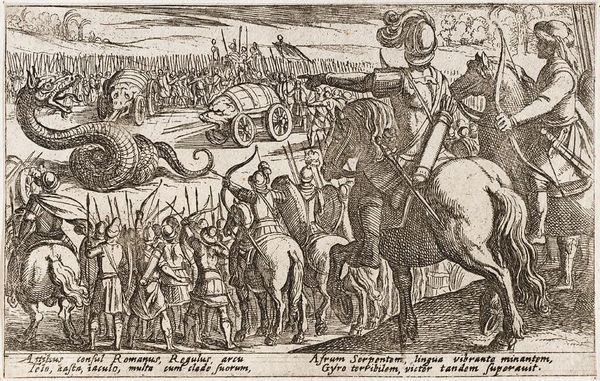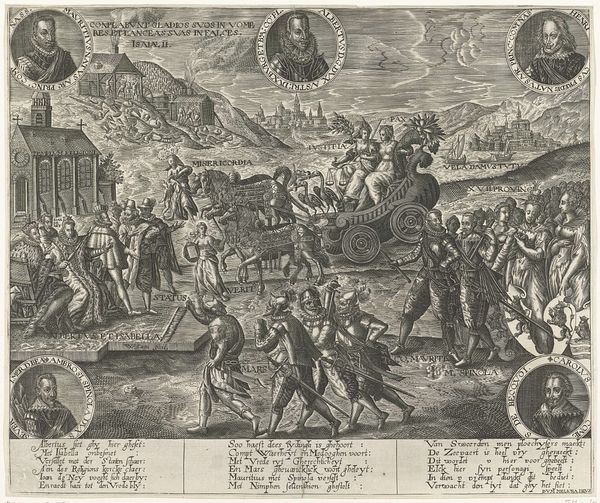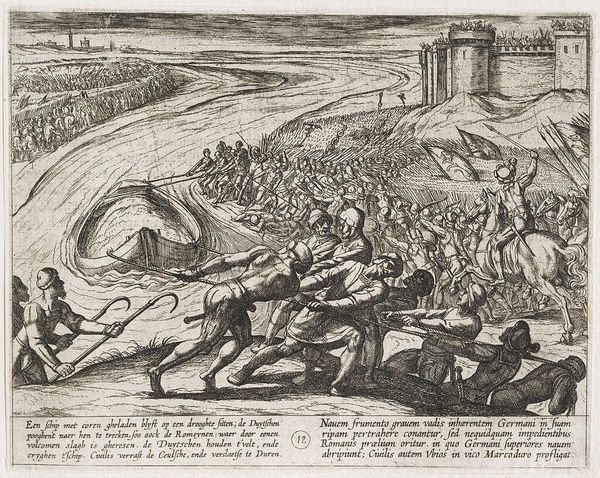
Dimensions: 16.5 x 21.2 cm (6 1/2 x 8 3/8 in.)
Copyright: CC0 1.0
Editor: So, this is Antonio Tempesta’s "Civilis' Troops Crossing the Maas River," made sometime between 1555 and 1630. It's a small print, full of chaotic energy, but what really stands out to you in this piece? Curator: I see a potent depiction of resistance. Consider the historical context: Tempesta, an Italian artist, illustrates a Germanic uprising against Roman authority. How does this image then function as a commentary on power, and perhaps even, resistance to power within Tempesta’s own time and place? Editor: So, the image isn't just about this specific historical event, but also about broader themes of oppression and rebellion? Curator: Exactly! Look at the implied violence and the dynamic composition. What does this say about how Tempesta views the act of resistance itself? Is it glorified? Necessary? Destructive? And how does this portrayal relate to the social and political climate of 16th and 17th century Europe? Editor: I hadn't considered it in that light. It gives the piece a completely new dimension. Thanks! Curator: Of course. It’s fascinating to consider how historical narratives can become tools for contemporary social commentary, isn't it?
Comments
No comments
Be the first to comment and join the conversation on the ultimate creative platform.
